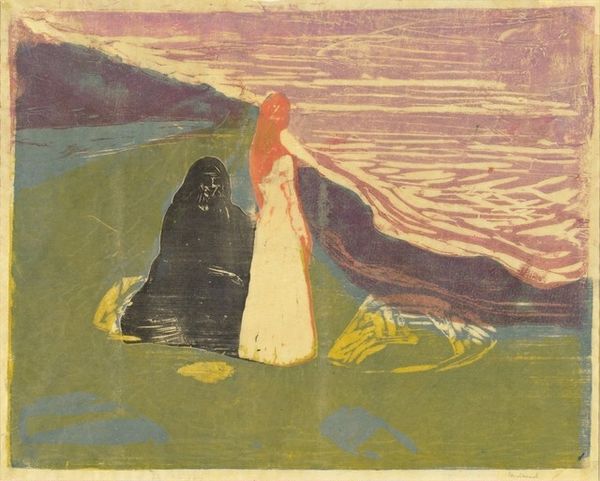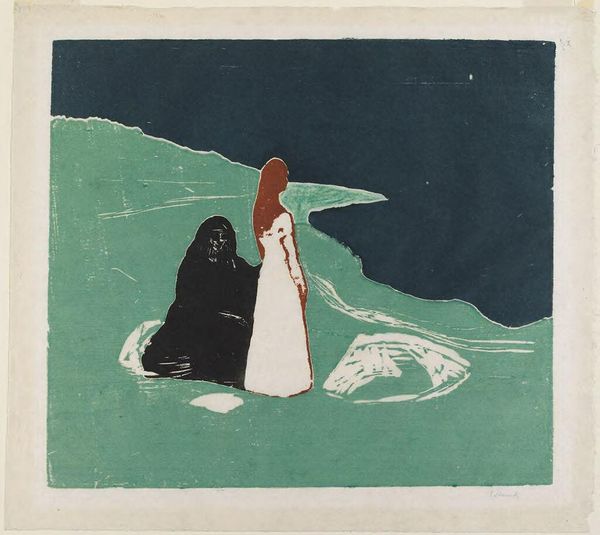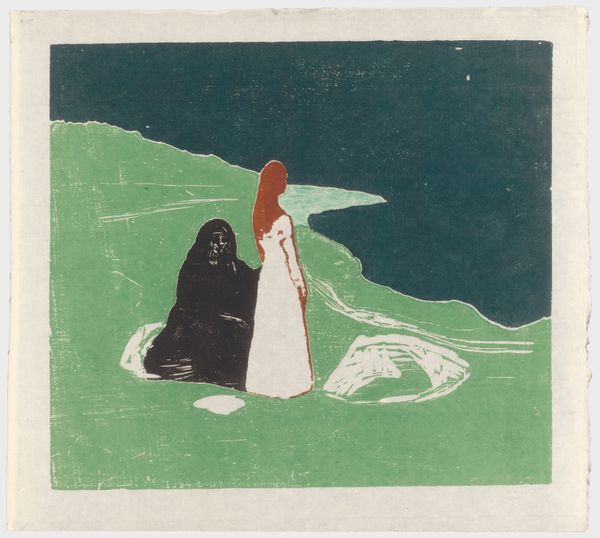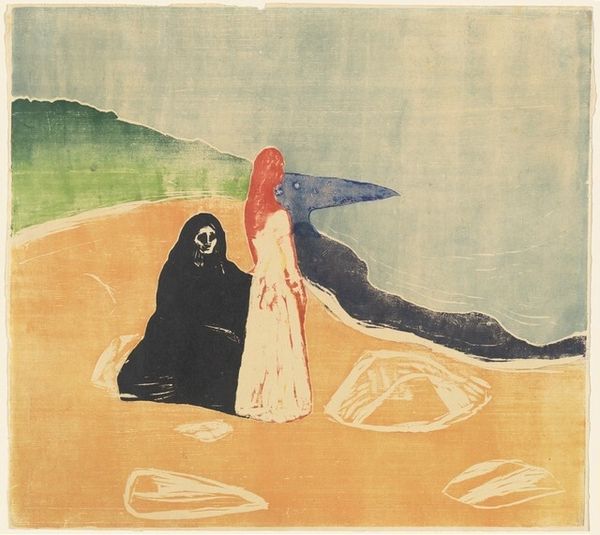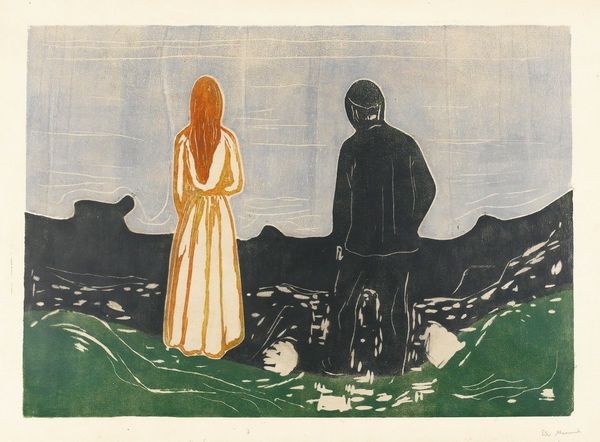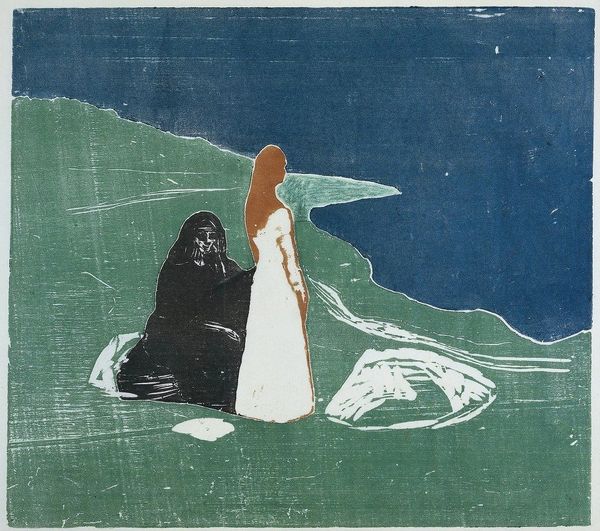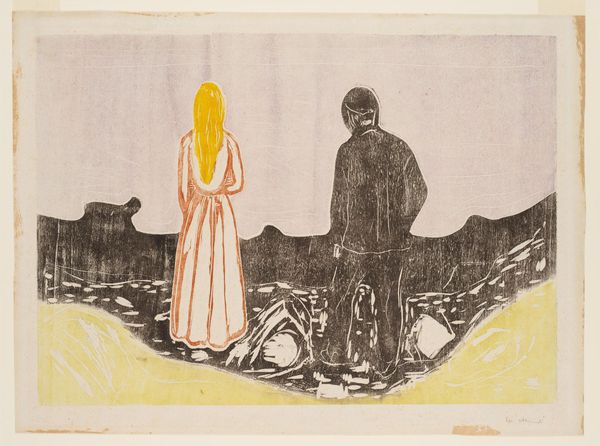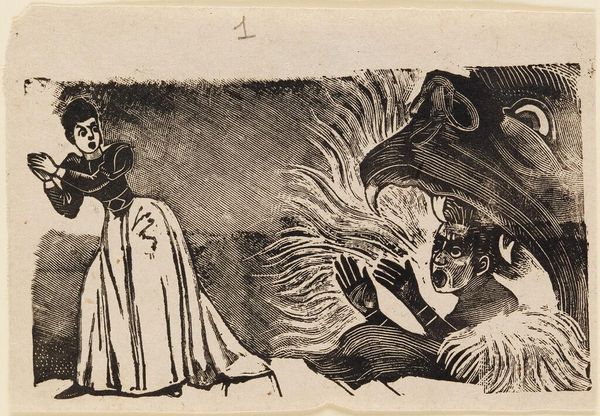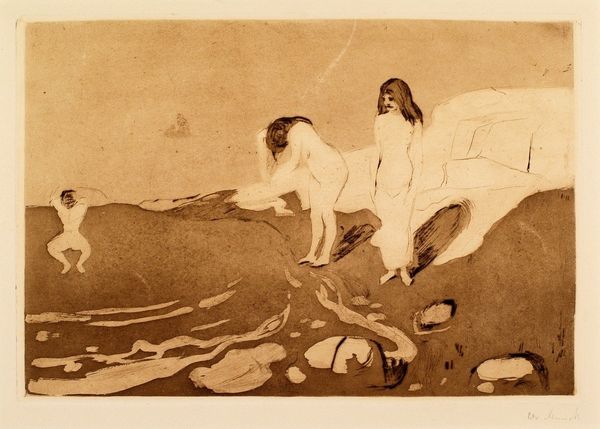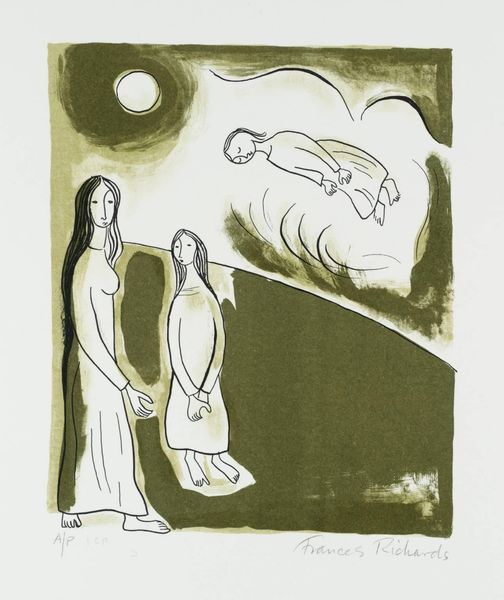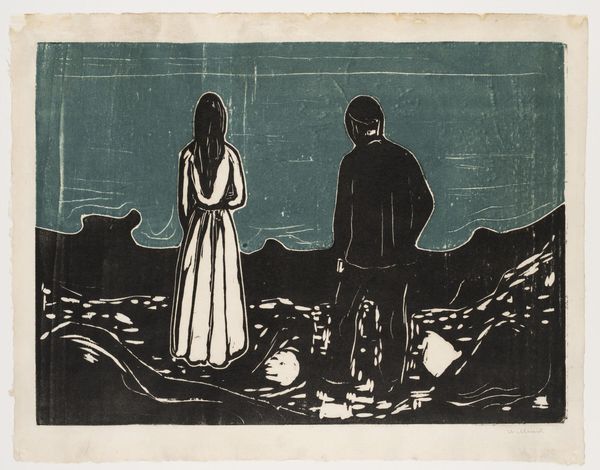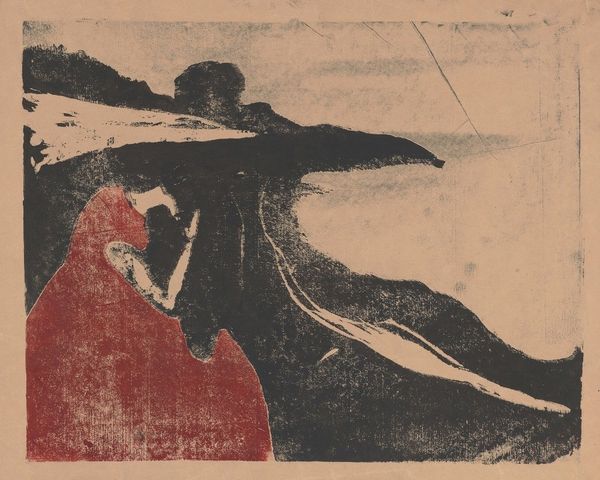
Dimensions: image (irregular): 40.3 x 51.9 cm (15 7/8 x 20 7/16 in.) sheet: 47.4 x 59 cm (18 11/16 x 23 1/4 in.)
Copyright: National Gallery of Art: CC0 1.0
Curator: This print, entitled "Two Women on the Shore," comes to us from Edvard Munch, created around 1900-1910. Editor: It immediately strikes me as a composition of stark contrasts – the spectral white figure standing rigidly against the dark, cloaked figure who is crouching low to the ground. An obvious metaphor seems to suggest itself. Curator: It's crucial to consider the prevailing social anxieties that rippled throughout Scandinavia during this period. Munch often wrestled with themes of life and death. His prints captured how social hierarchies and gendered expectations impacted women's realities and expressions. The pale, unburdened form, so very upright, set against the shadowed crouching figure seems a painful statement about women’s disparate roles in public vs. private life, expectation versus the reality, don't you think? Editor: Undoubtedly. But one shouldn’t reduce such psychological pieces to a mere ‘statement’ of inequalities. Let’s not forget that Munch engaged with visual culture outside painting circles as well, taking notes from contemporary photography and popular visual art forms that depicted women as both powerful yet tragically doomed figures in modernity. Curator: Yes, and he lived during times when new medical discourse was surfacing that attempted to scientifically differentiate "normal" women from supposedly hysterical ones. So these dualistic tensions were amplified by those scientific views. He even depicts one figure upright, open in a sense, and the other bowed under wraps almost as if physically and symbolically representing some diagnosis. Editor: It’s a brilliant detail in understanding the context from the institutions of his day. Yet the choice of a shoreline must also resonate, as historically coastlines and waterways, especially in Nordic and Baltic nations, signified locations of departures or returns. A place where different worlds converge... Curator: Interesting indeed. These complex symbolic layers of these print work together and force us to acknowledge the social scripts and gendered conditions being placed upon individuals at that time, while alluding to forces beyond comprehension and control that shape destinies. Editor: It reminds us that despite the progress of modern art, societal challenges concerning women’s positions within society persist across eras and spaces, continuing into the present moment and forcing change for good.
Comments
No comments
Be the first to comment and join the conversation on the ultimate creative platform.

